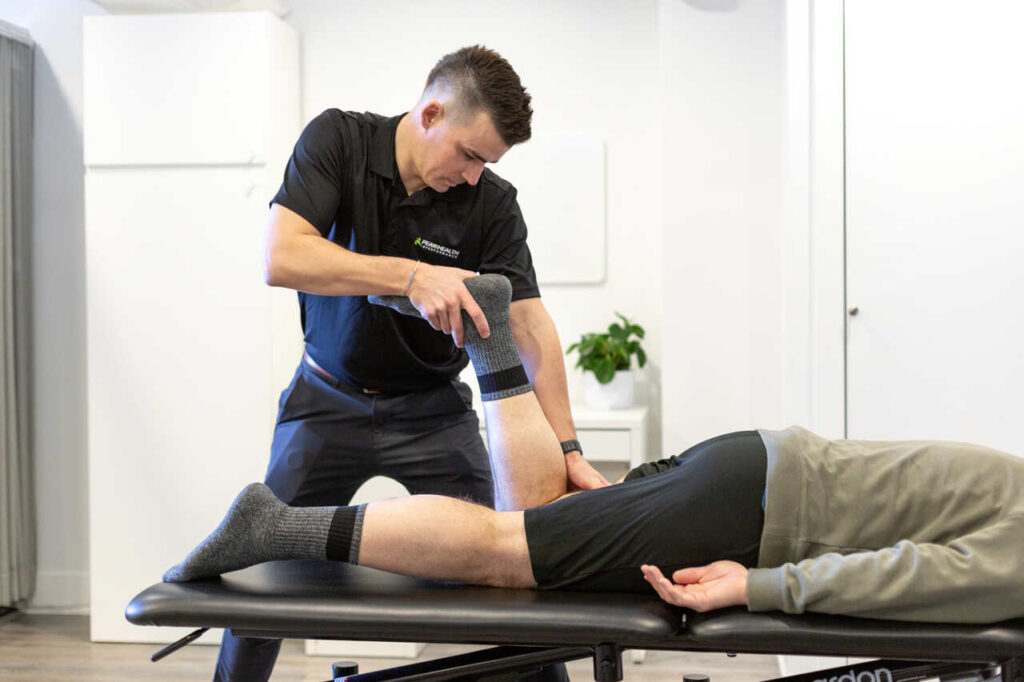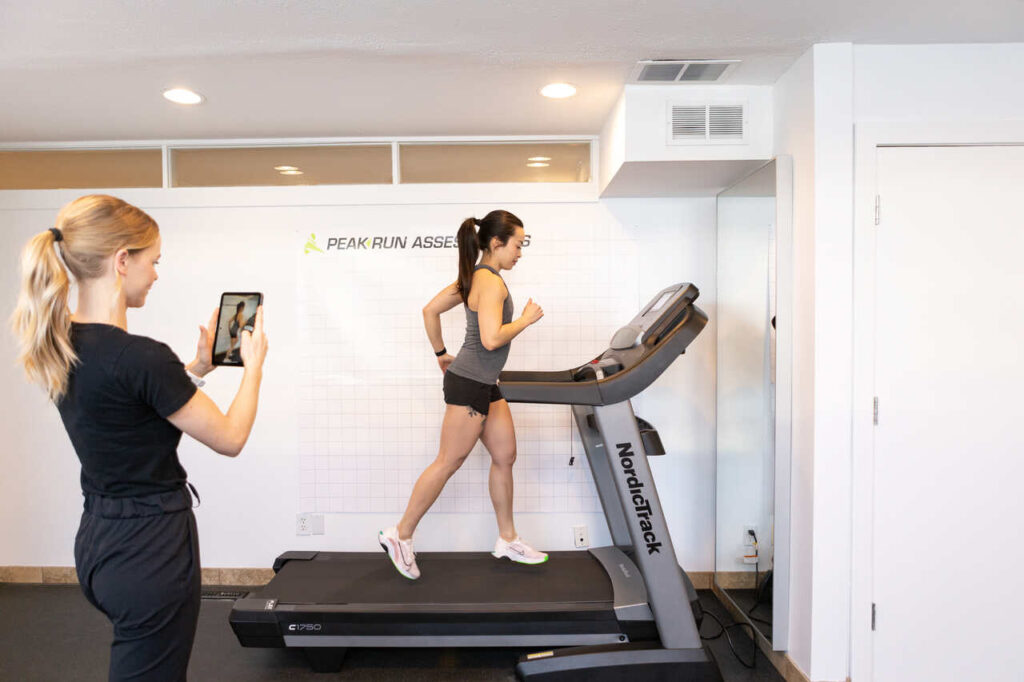Written by Dr. Claire Wells, Chiropractor
Are you having pain during or after running? Whether you’ve been racing for years or just bought your first pair of running shoes, none of us are immune to pain and injury. Here are answers to some common questions you may be experiencing.
What Is the Most Common Running Injury?
Knee pain is the most common complaint, with hip pain coming in second. Common injuries include patellofemoral pain syndrome, iliotibial band syndrome, Achilles tendinopathy, medial tibial stress syndrome, tibialis posterior tendinopathy, plantar fasciopathy, and calf and hamstring muscle strains. Certain types of tissue are more prone to injury depending on variables like distance and speed, the total volume of training, and experience level in the sport.
What Causes Running Injuries?
It is usually impossible to pinpoint one specific factor that is to blame when you get injured. Here are some things to keep in mind based on the research in this area:
- The NUMBER ONE risk factor for future injuries is a previous injury. This is why it is important to fully rehabilitate all injuries, no matter how severe. Being pain-free does not mean that the tissue is fully healed or that strength and function are restored.
- Training errors can also play a huge role. 80% of running injuries are overuse injuries. Training volume (frequency, duration, and distance) and training intensity (how hard you’re working) are often poorly managed.
- Shoe type does not predictably contribute to injury risk.
- Gait biomechanics can play a role. Every run requires thousands to tens of thousands of steps, so the way you move with each step matters. Believe it or not, running is a skill!
- Many non-sport factors play a role in how ready your body is to handle the stress of training, and in how sensitive your body is to pain. These include sleep, nutrition, hydration, mental health, emotional state, overall physical health, and life stressors.
How Do You Tell If A Running Injury Is Serious?
Here are some indications that you should get assessed:
- Pain exceeds 3/10 (with 10/10 representing the worst pain you can imagine)
- You notice swelling, redness, or another visible change in the pain location.
- There was a sudden onset of pain with a clear mechanism of injury (ex: you rolled your ankle, or you felt/heard a “pop” when your knee twisted, etc.)
- It used to hurt only at the start of runs, but now it hurts the whole time, worsens during your run, or starts to linger after you stop.
- It does not improve with a few days off training.
- You have tried stretching, foam rolling, medication, ice/heat, etc. and it’s persisting or worsening.
- You have tingling, pins and needles, numbness, sharp shooting pain, and/or electric-like pain.
How Long Does a Running Injury Take to Heal?
It depends on things like the extent and duration of the injury, the type of tissue that is injured, and whether you are appropriately modifying what you’re doing. Here are some general timelines for tissue healing in an otherwise healthy body:

- Muscle: 2 weeks to 12 months (depending on severity)
- Tendon: 2 weeks to 12+ months (depending on severity)
- Bone: 6-12 weeks
- Ligament: 2 weeks to 12 months (depending on severity)
- Cartilage: 9+ months
It is important to keep in mind that these are timelines for tissue healing, not for return to sport at full capacity. Returning to running needs to be gradual and progressive but may take place before the tissue is completely healed.
What Is the Fastest Way To Heal a Running Injury?
Most injuries can be managed by modifying the variables of your training program and doing specific rehabilitative exercises. However, the specifics drastically vary based on the injury and the individual. For example, some injuries require total rest from weight-bearing on the injured leg, while some require heavy loading of the painful tissue, so it’s important to get assessed by a professional.
Often, we can help manage symptoms with manual therapy (such as soft tissue treatment and joint mobilizations) and therapeutic modalities (such as acupuncture or dry needling, and Shockwave Therapy in Calgary South) to help get you back running as soon as possible.
Is Walking Good For Running Injuries?
Walking may be appropriate depending on the injury and whether walking recreates the pain that you have when you run. The problem with walking is that it doesn’t replicate the exercise intensity of running, so cross-training may be better if you want to maintain fitness. This could include cycling, cross-country skiing, or using an elliptical – whatever you have access to that doesn’t aggravate your pain.
Again, it depends a lot on the injury you have, so it’s best to consult with your Chiropractor or physiotherapist. Once you are cleared to return to running, using walking in a run-walk progression is a helpful strategy that is supported by research.
When Can I Start Running Again After an Injury?
There are different approaches to this, but a good general rule would be that you need to be pain-free with walking and cross-training for 2+ weeks first and be able to perform basic single-leg strength and plyometric exercises with proper form and no pain. Some examples include:

- 30 seconds of single-leg squats at a rate that mimics your running cadence
- 20+ reps of single-leg calf raises
- 1 minute of double-leg hops; equal distance on both sides for a single-leg triple-hop test
The best thing to do would be to get assessed by a chiropractor or physiotherapist who can test for symmetrical and sufficient ranges of motion, balance, and strength. And be sure to follow a structured, gradual, and symptom-monitored return to running program when you do get back to it!
How Do Physiotherapists and Chiropractors Help Treat Running Injuries?
Both can help by assessing your injury, testing for movement dysfunction and strength imbalances, identifying training factors that may have contributed to your injury, and guiding you through the recovery process. They can make a plan to get you better based on your injury – including education, training modifications, specific exercises, and hands-on treatment.
At Peak Health And Performance, we offer a wide range of treatment options including Physiotherapy, Massage Therapy, Chiropractic Care and Concussion Care to address a variety of conditions and help improve your quality of life. Book your appointment today!
Some of the common conditions we can help with include:
- Sports injuries
- Musculoskeletal injuries
- Neck pain
- Shoulder pain